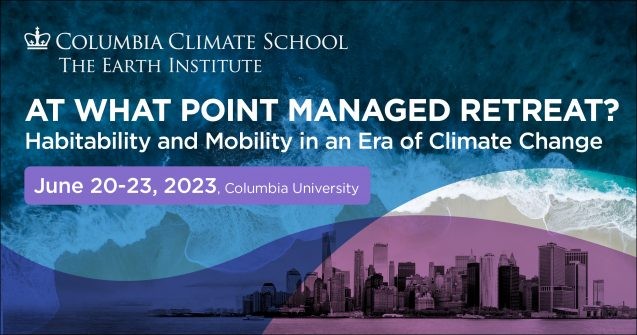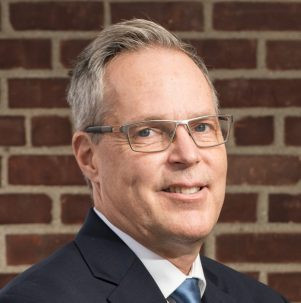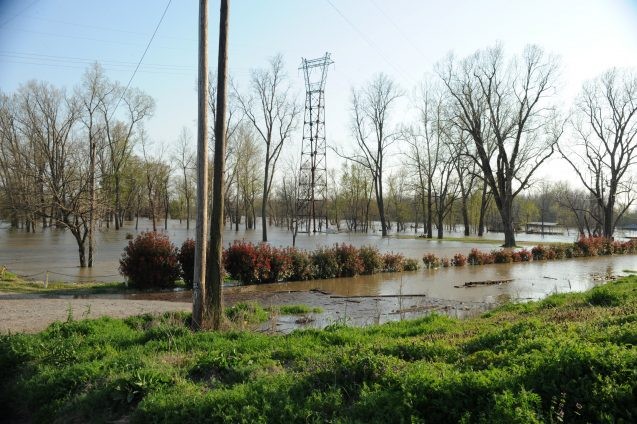Adapt or Retreat? Conference Will Explore Questions of Habitability in a Changing World
At Columbia Climate School’s Managed Retreat conference, local and international academics, scientists, and community members will join representatives from different sectors to discuss managed retreat, habitability, and climate justice.
As sea levels rise, fires rage, and temperatures continue to skyrocket around the globe, it is generally understood that certain areas may no longer be habitable in the not-so-distant future. But what does it mean to be habitable? And who gets to decide what happens to these areas under threat?

These questions and more will be a major focus at the upcoming Managed Retreat conference, hosted by the Columbia Climate School. The conference will discuss some of the complex concerns that fall under the umbrella term of managed retreatâthe purposeful movement of homes, communities, and planned development away from hazardous areasâincluding habitability and mobility, as well as their shifting roles in response to climate change.
Held from June 20 to June 23, the conferenceânow in its third iterationâwill bring together representatives from the public, private, and nonprofit sectors alongside academics, scientists, and community members from around the world to address this increasingly important topic, while keeping questions of equity at the forefront. The full agenda can be found here.
What Is Habitability?
The concept of habitability is not exactly new, said Alex de Sherbinin, a senior research scientist and the deputy director of the Center for International Earth Science Information Network within the Columbia Climate School. He explained that the term has been tied back toânow largely discreditedânotions of “carrying capacity,” where ecologists talked about animal populations and how much livestock could be supported on a given area of land, and then extrapolated this idea to humans. “Those are potentially legitimate questions, but the idea of carrying capacity is overly mechanistic since human interactions in the environment are much more complex than for other species,” he added.
Similarly, in the context of a changing global climate, there has been a recent increase in efforts to “map areas of the world that will either experience really extreme heat, prolonged droughts, sea level rise, glacial meltingâthe list goes on,” de Sherbinin said.
However, what may be missing in this equation is a social science perspective and a more nuanced local perspectiveâone that especially takes local circumstances, capacities, and environmental knowledge into account, in order to start developing the right solutions for these diverse scenarios, de Sherbinin added. (He explored this issue with fellow conference co-chair and Lamont-Doherty Earth Observatory research professor, Radley Horton, in a 2021 Science article, “Assessing human habitability and mobility.”) One major goal of the conference is to convene researchers and practitioners from all sides of this complicated conversation in one place.

When it comes to habitability, there are essentially three approaches: retreat, adapt, or build infrastructure solutions, he said.
In dryland agricultural systems around the globe, for example, where groundwater is steadily being depleted, fundamental decisions will need to be made about whether to move or stay in place and adapt farm practices or create new infrastructure, such as irrigated agriculture.
Another example is in very low elevation coastal areas that get regularly inundated, where the question becomes: “Do you somehow develop adaptation mechanisms, such as putting the houses on stilts or switching to small-scale shrimp farming or aquaculture instead of rice in regions of the world where the land is now saline? Or do you put up dikes and defenses to grow the hard infrastructure?” de Sherbinin said.
Interventions can also be costly. With enough investment, these types of responses have the potential to make an “uninhabitable” area habitable, but each place comes with its own stressors, he said. While some stressors are climatic, there is often a confluence of factors, including social, political, and economic concerns.

So, as habitability declines in some areas of the world, the pivotal question becomes: “What are we as a society able to do in order to address these complex situations and hopefully enhance local habitability?” de Sherbinin said. Which communities receive help, what form that help takes, and who makes the decisions, are all questions of utmost importance.
Viewed through this lens, the concept of habitability is inextricably linked to equity and climate justice, and the fact that many of the countries experiencing the greatest impacts on habitability are the ones least responsible for global emissions. “We have to see this in a very justice-oriented way,” de Sherbinin emphasized.
What Questions Will We Hear at the Conference?
At the Climate School’s upcoming conference, de Sherbinin said he is looking forward to an opening panel he is moderating on June 20, which will address questions of habitability, loss and damage, climate justice, and mobility. “We really want to bring those concepts up front in the conference and also to make some of our U.S.-based participants aware that this topic extends beyond the technical packages in high-income countries that are often discussed at the conference, which are also really critical. But just to raise awareness in the U.S. that there are larger threats and discussions going on in other parts of the world about how to address questions of habitability,” he said.
His own research, de Sherbinin said, has focused primarily on low- and middle-income countries and modeling future scenarios of climate migration and mobility, as well as field work and literature assessments of those topics. So de Sherbinin is also eager to learn from colleagues who are talking about technical packages—such as buyouts and local community involvement in decision-making and political processes that lead to decisions around managed retreat.
Some of the other touchpoints related to habitability that de Sherbinin expects to hear about at the conference include: Should the National Flood Insurance Program be modified to address persistent climate concerns? For example, once you receive two or three buyouts or payouts, should that be the end of it? Who benefits most from those payouts or buyouts that the Federal Emergency Management Agency has made, and what biases have emerged? How do we best support local and low-income communities who want to stay in place despite habitability concerns?
“I think the conference is going to be a really fascinating collection of people with both international and domestic perspectives focused on some really tough issues, but ones that are growing in importance in the U.S. and around the world,” de Sherbinin said.
